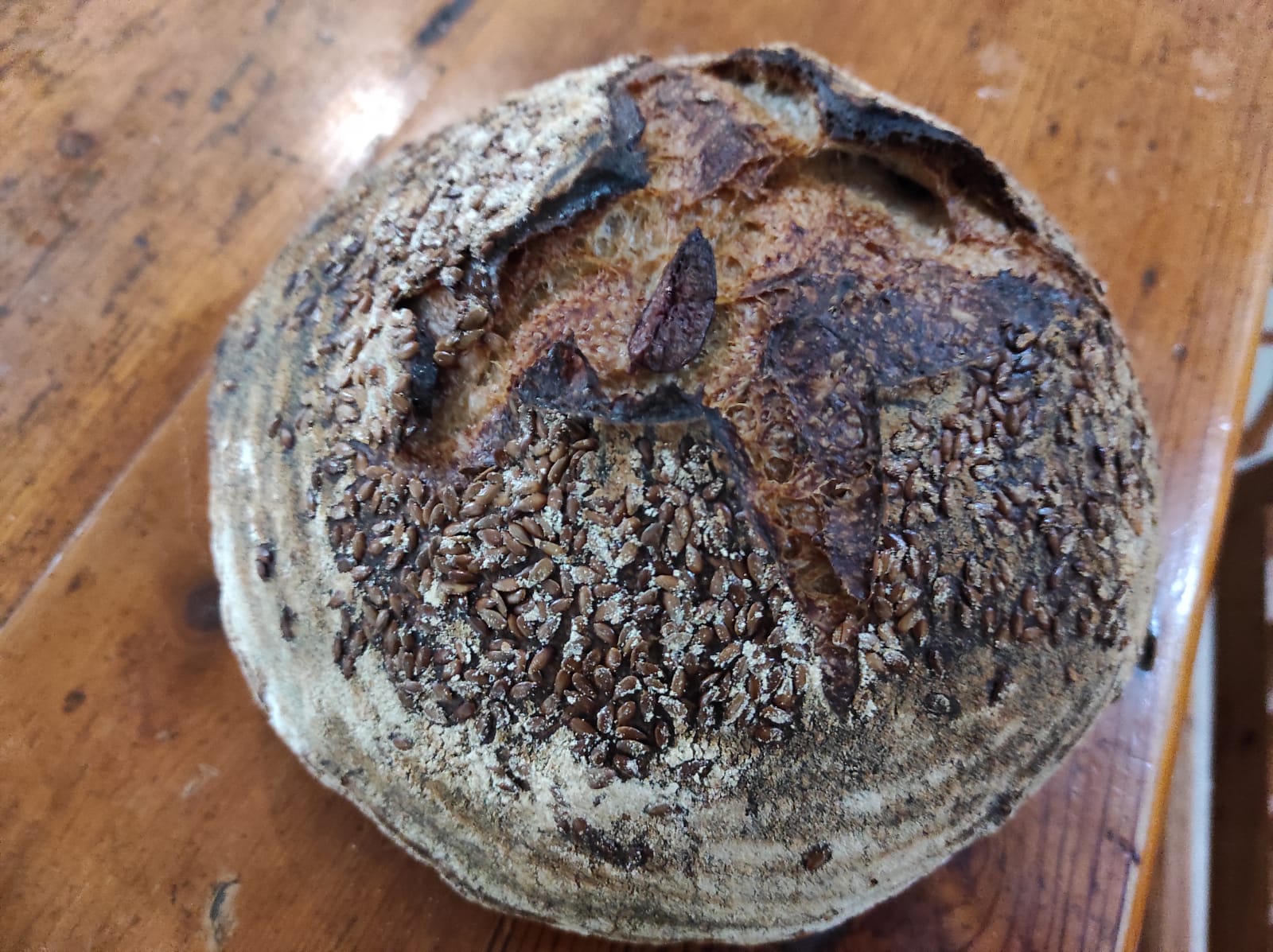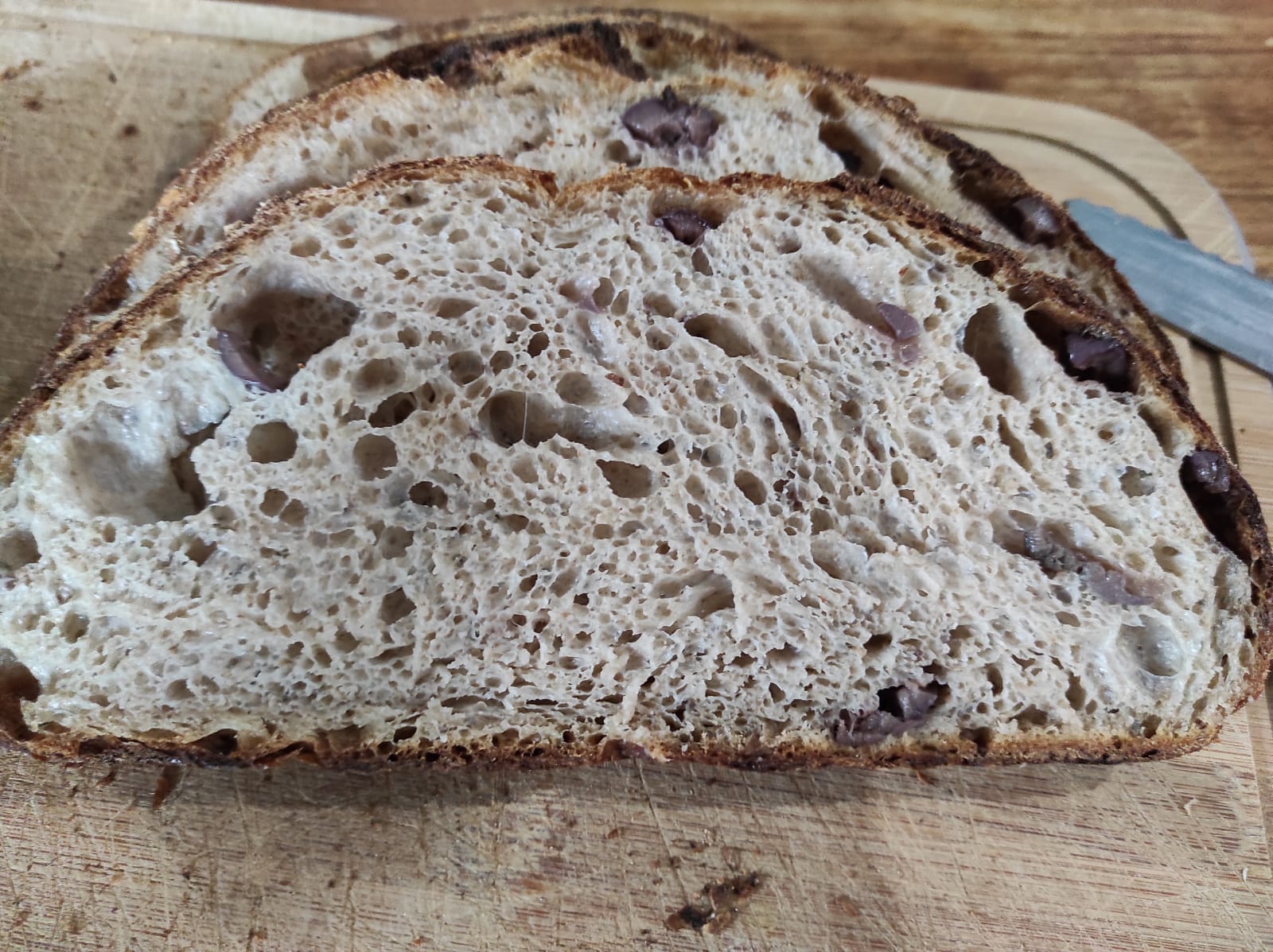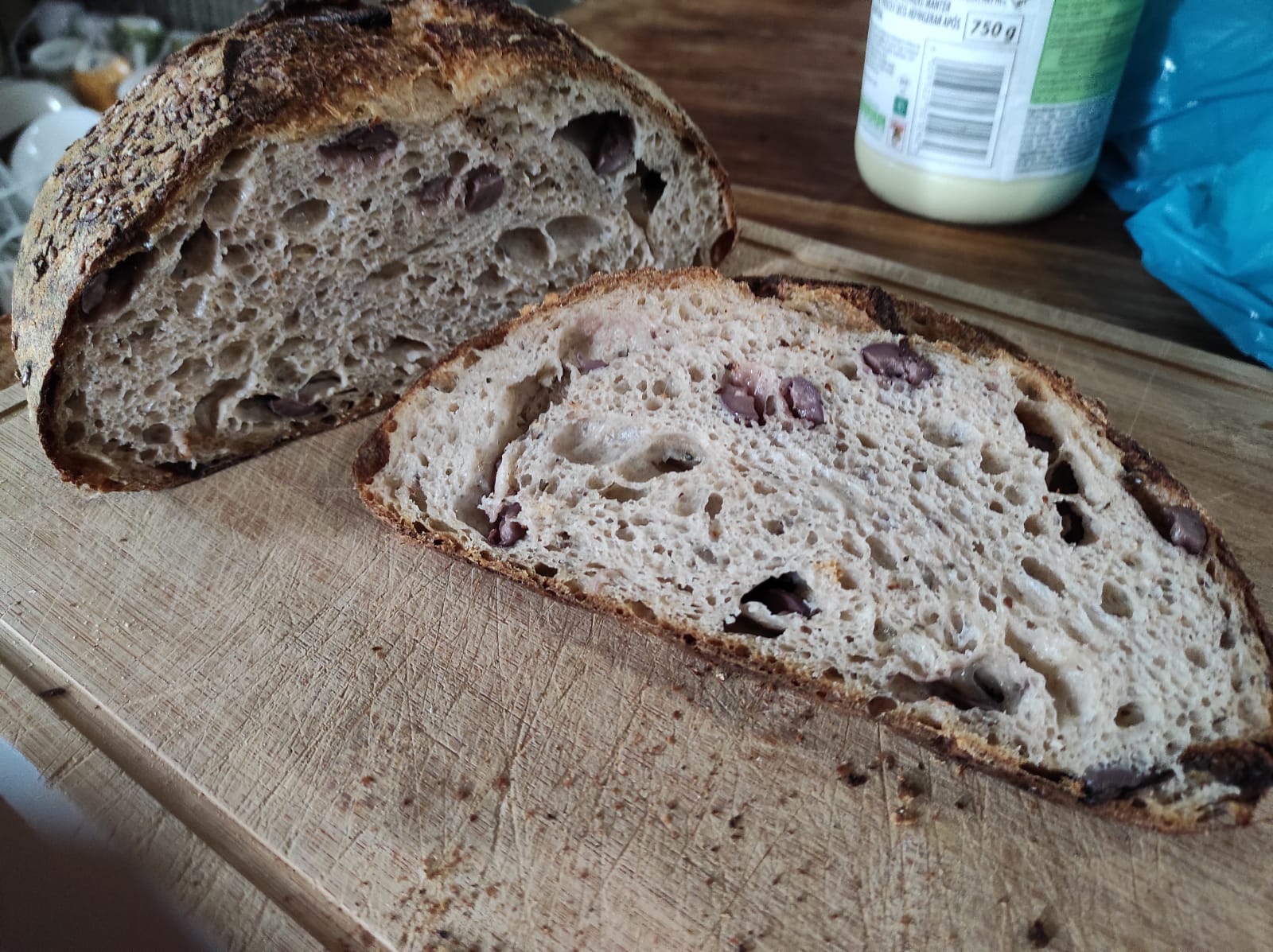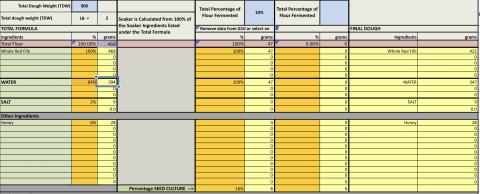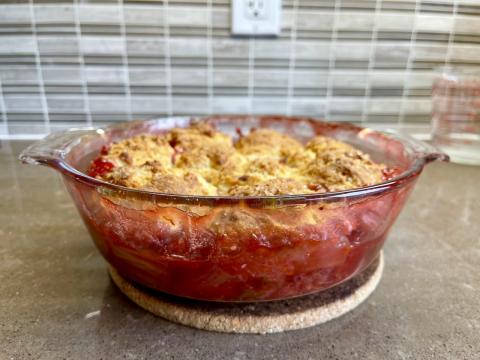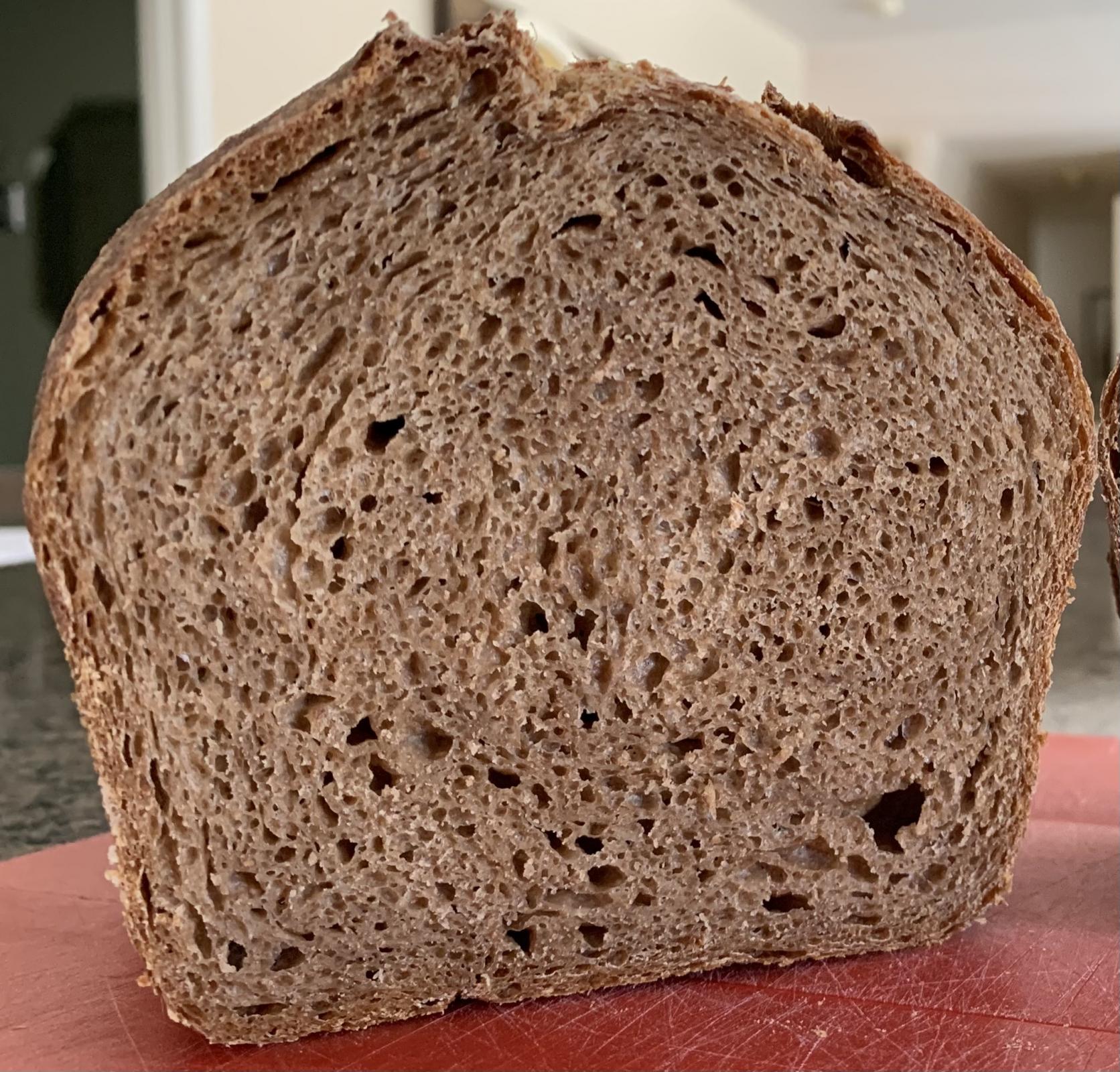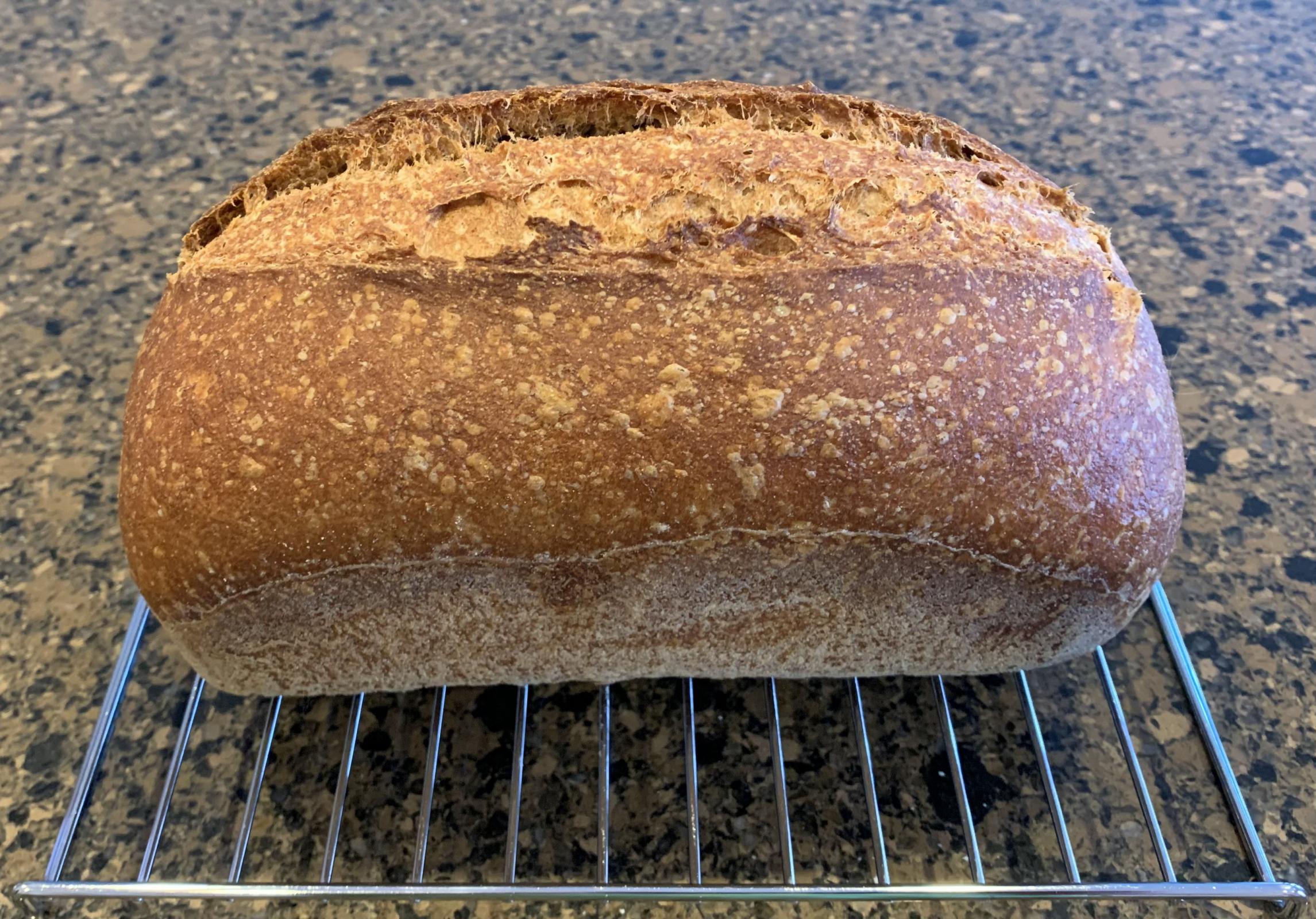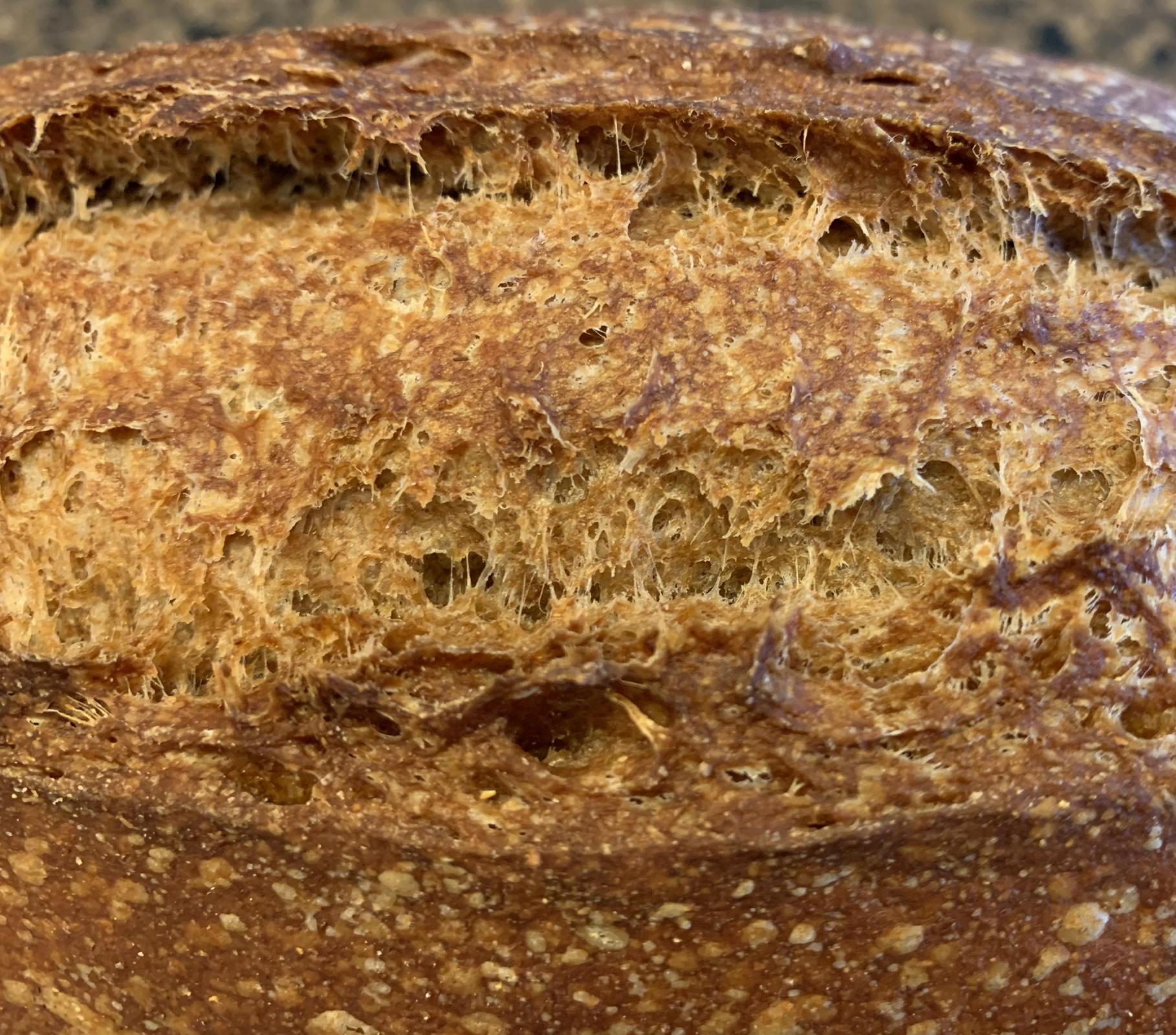I actually baked this twice now because I thought I had severely overproofed my first loaf. After shortening the bench final proof before cold retard on my second loaf to compensate the second loaf was more or less the same. Unfortunately I believe that this flour is too soft for me to bake at 100% as a hearth loaf. It is hard to believe the difference between this loaf and the one I very recently baked at 75% red fife. If my belief that red fife is too lacking in gluten is incorrect please let me know, I’m interested in hearing your ideas.
During bassinage, I actually increased the hydration to 87% as the dough seemed to want more water.
Overnight saltolyse and levain build done.
In the morning add levain to saltolyse dough, mix to incorporate with Rubaud mixing.
Slap and fold to good gluten development. 800 done good windowpane
Rest 30 min then bench letterfold ferment at 80ºF removing 30 g of dough for aliquot jar
Rest 30 min then lamination and add black sesame seeds
Then every 30 mins coil fold
End bulk when aliquot jar 60% rise
Shape then bench rest until aliquot jar 90% rise
Next day
Preheat oven 500ºF with dutch oven inside.
Once over reaches temp, turn dough out of banneton, score and bake in dutch oven for 20 mins at 450ºF with lid on. Drop temperature to 420ºF and bake 10 mins with lid on.
Remove lid and bake for 20 mins or until done with the bread out of the dutch oven on rack directly.
I’ll post crumb photos later today, this is hot just out of the oven.





